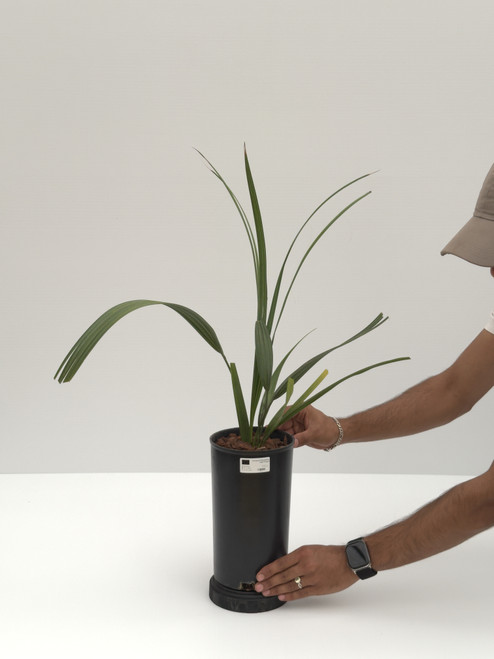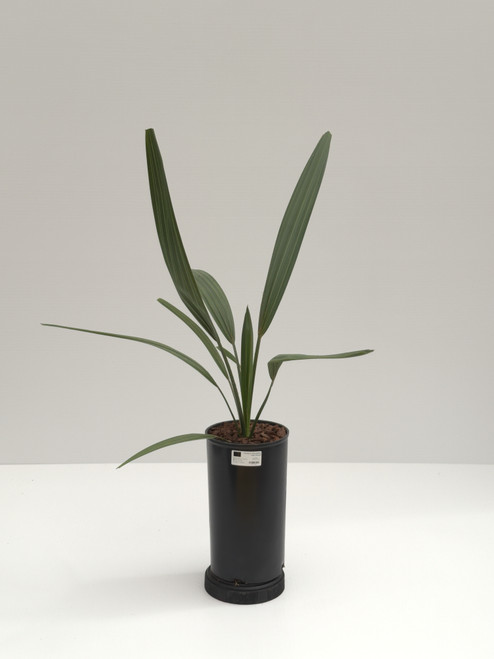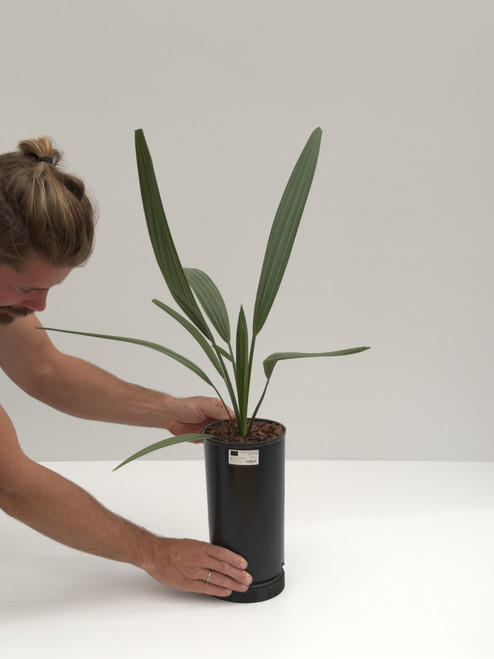Product Description
Habitat and Distribution
Southwest Florida.
Description
Sabal palms are New World plants, this species is found in the Bahamas and Cuba, Florida, Georgia and the Carolinas. It thrives in a variety of settings including beaches, forests and swamps. In their natural range they are considered weedy as they readily propagate throughout the landscape, usually assisted by birds.
Culture
Optimum growth occurs in humid subtropical to warm temperate climates where average rainfall is 100 – 163 cm (39-64 inches), and average maximum/minimum temperatures range from –4 - 36° C (25-97 ° F). Northern growth is limited by low winter temperatures. (Smithsonian Marine Station at Ft. Pierce) Preferred soil type for S. palmetto is calcium rich, and neutral to alkaline in nature. Cabbage palms prefer poorly drained soils, and often grow at the edge of freshwater and brackish wetlands. This species tolerates flooding (Alexander 1955).
Seed Germination: Sabal palm seeds are not difficult to germinate, but should be planted when fresh for best germination. With uniform moisture and high temperatures (86°F–95°F), germination can occur in as few as 18 days, with 50% of final germination occurring within 33 days (Carpenter 1987; Sento 1970). Newly emerged seedlings look much like grass, but each succeeding leaf has an additional leaf segment that adds to their width. The slow-growing seedlings can take 15–30 years to develop a visible trunk under natural conditions, but in nurseries this can occur much faster (McPherson and Williams 1996). Initial trunk elongation can be quite rapid under favorable conditions (up to 6 inches per year), but this quickly slows to less than an inch per year as the palm matures (McPherson and Williams 1996). (edis.ifas.ufl.edu)
Comments and Curiosities
This very rare and unusual form of Sabal palmetto is found in southwest Florida. Further reading about this palm can be accessed through the International Palm Society's on-line archived issues of Palms magazine. Once you've accessed the archives area look for Volume 49 (1) March 2005.

























